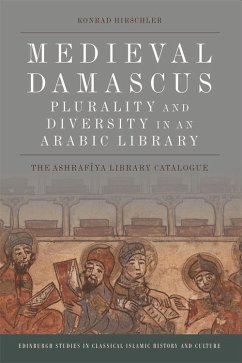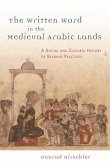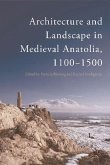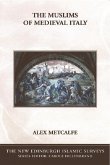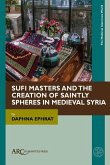'This is a tour de force of ferocious codex dissection, relentless bibliographical probing and imaginative reconstructive storytelling. The trajectory of an urban "public" library whose holdings shed light on the intellectual milieu of thirteenth-century Damascus comes to light through Hirschler's sensible and comparative lens. Our knowledge of medieval Arabic book culture, library culture and reading culture is significantly enriched.' Li Guo, University of Notre Dame The first documented insight into the content and structure of a large-scale medieval Arabic library The written text was a pervasive feature of cultural practices in the medieval Middle East. At the heart of book circulation stood libraries that experienced a rapid expansion from the twelfth century onwards. While the existence of these libraries is well known, our knowledge of their content and structure has been very limited as hardly any medieval Arabic catalogues have been preserved. This book discusses the largest and earliest medieval library of the Middle East for which we have documentation - the Ashrafiya library in the very centre of Damascus - and edits its catalogue. The catalogue shows that even book collections attached to Sunni religious institutions could hold very diverse titles, including Muʿtazilite theology, Shiʿite prayers, medical handbooks, manuals for traders, stories from the 1001 Nights and texts extolling wine consumption. At the same time this library catalogue decisively expands our knowledge of how books were thematically and spatially organised on the shelves of such a large medieval library. Listing over two thousand books the Ashrafiya catalogue is essential reading for anybody interested in the cultural and intellectual history of Arabic societies. Setting it into a comparative perspective with contemporaneous libraries on the British Isles opens new perspectives for the study of medieval libraries. Key Features - Includes an annotated translation of the Ashrafiya catalogue and full-colour facsimile reproduction of the catalogue's unique manuscript - Seeing which books were held in the library give insights into text circulation and medieval 'bestsellers' - The publication of the catalogue provides the first documentary material for comparative research with libraries in other world regions - The organisation of the catalogue contributes to the discussion on how practitioners created systems and hierarchies of scholarly fields of knowledge Konrad Hirschler is Professor of Middle Eastern History at SOAS, University of London. He is the author of The Written Word in the Medieval Arabic Lands (Edinburgh University Press, 2012) and Medieval Arabic Historiography: Authors as Actors (2006) as well as co-editor of Manuscript Notes as a Documentary Source (2011). Cover image: Library from al-Ḥarīrī, Maqāmāt, 654/1256 (c) The British Library Board, or. 1200, fol. 6b Cover design: [EUP logo] www.euppublishing.com

